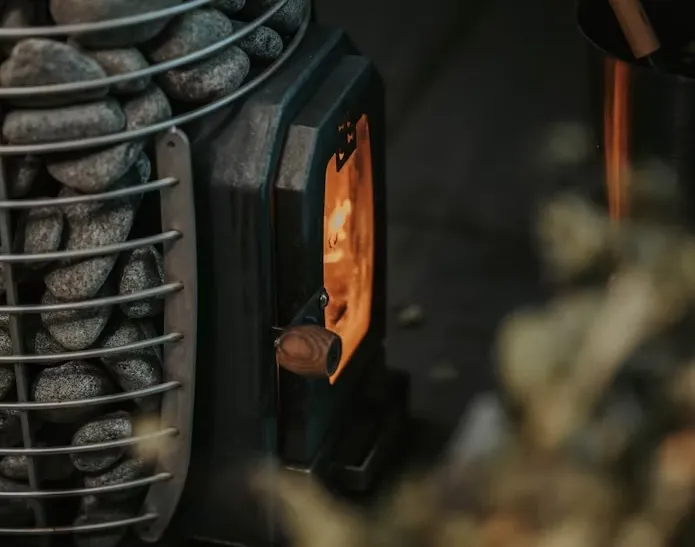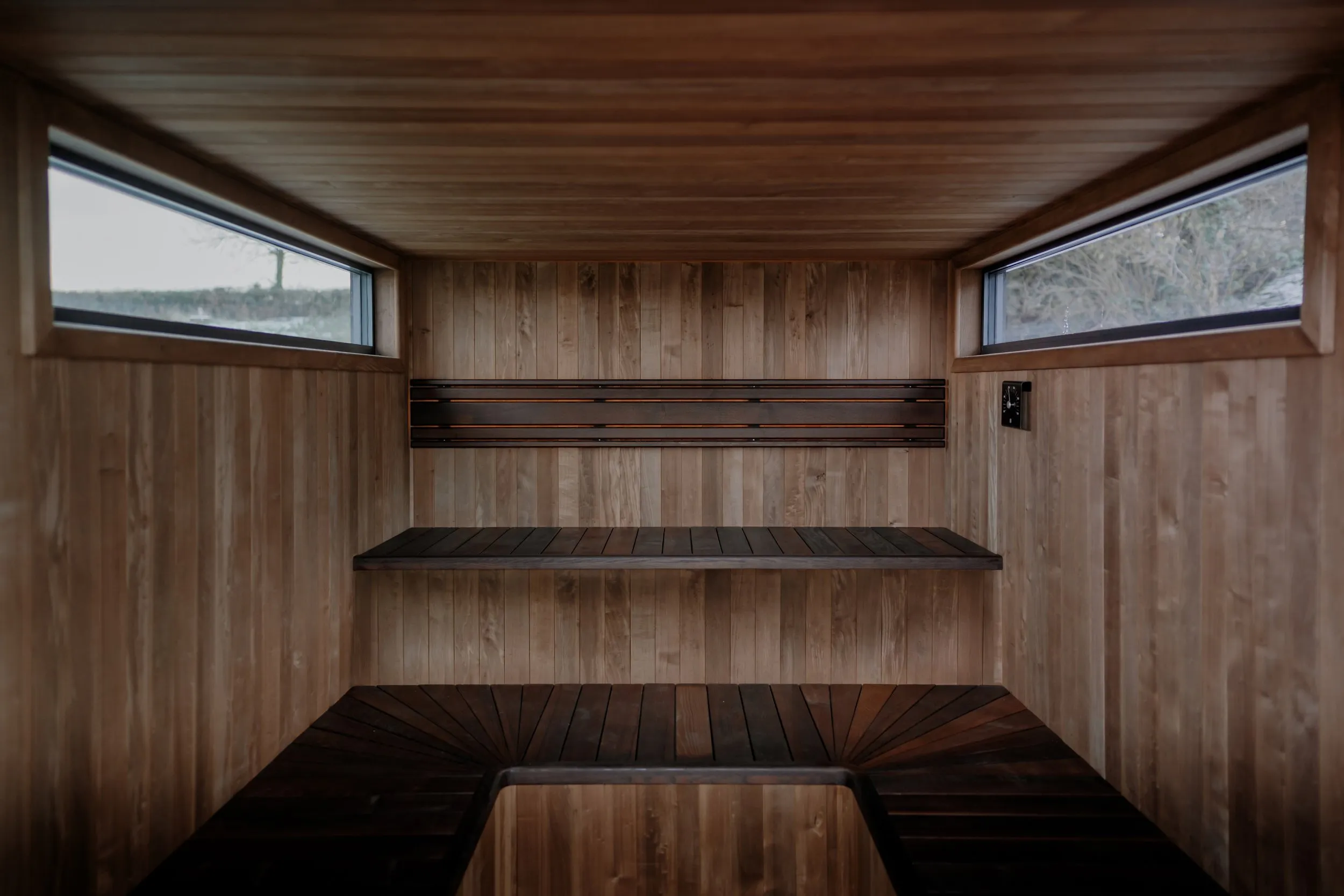ventilation
the lifeblood of a true sauna
The Importance of Fresh Air
Have you ever felt dizzy or fatigued in a sauna? You might have thought that it was because it was so hot, right? Well, more likely than not, the real culprit was stale air with high levels of carbon dioxide. Proper ventilation is just as important as maintaining high temperatures. A well-ventilated sauna ensures constant airflow, refreshing the space and enhancing the overall experience. Let's follow the journey of the air in a sauna from start to finish to understand why.

Air Entry: The Starting Point
In a well-sealed and insulated sauna, air enters only where you want it to. With a wood-burning stove, fresh air is drawn in through a vent placed directly behind the stove as well as from the drain in the floor. Some of this air is used to feed the fire, while the rest flows around the stove and its surrounding rocks, which are heated to 200-300°C.

Rising Warm Air
As the fresh air is heated, its density decreases, and it begins to rise. This hot air travels upward, passing a small one-way vent above the stove, where it mixes with another portion of fresh air. This ensures that the rising air remains clean and invigorating as it moves throughout the sauna.

Spreading Across the Ceiling
The rising hot air reaches the ceiling and begins to spread outward, warming the room as it moves. This process ensures that heat is distributed evenly across the sauna, minimizing hot and cold spots. This is important to note: you might think that the heat from the stove is what heats the sauna. Although this does, of course, play a role, the heat transfer resulting from this movement of air is much more important. In short, we want heating through convection, not radiation.

Sinking Air and Ventilation
As the air travels along the ceiling, it cools slightly and begins to sink. This sinking air flows down the walls and reaches the benches, where it provides warmth at the seating level. Part of this air moves through small vents located beneath the top bench, exiting the sauna and creating a low-pressure area that encourages continuous airflow from above.

The Circulation Belt
This process creates a continuous cycle: fresh air enters the sauna, is heated when it comes into contact with the stove, rises to the ceiling, spreads across the room, sinks along the walls, and exits through the vents. This "circulation belt" ensures that the air is always moving and refreshed, preventing the buildup of stale air as well as minimizing any local hot or cold spots.

Why Ventilation Matters
Proper ventilation transforms the sauna experience from stifling to invigorating. It maintains air quality, prevents overheating, and ensures that every breath you take feels clean and refreshing. A well-ventilated sauna isn’t just more comfortable—it’s healthier, safer, and more enjoyable. It's the lifeblood of a good sauna!

see for yourself
Ready to experience the timeless tradition of sauna for yourself? Step away from the everyday and immerse yourself in a world of heat, steam, and relaxation. Book your free session at our sauna and discover the profound joy of connection, renewal, and wellness firsthand.
